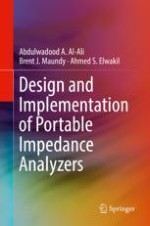2019 | OriginalPaper | Buchkapitel
3. In-Direct Impedance Measurement: Phase Extraction Algorithm
verfasst von : Abdulwadood A. Al-Ali, Brent J. Maundy, Ahmed S. Elwakil
Erschienen in: Design and Implementation of Portable Impedance Analyzers
Aktivieren Sie unsere intelligente Suche, um passende Fachinhalte oder Patente zu finden.
Wählen Sie Textabschnitte aus um mit Künstlicher Intelligenz passenden Patente zu finden. powered by
Markieren Sie Textabschnitte, um KI-gestützt weitere passende Inhalte zu finden. powered by
